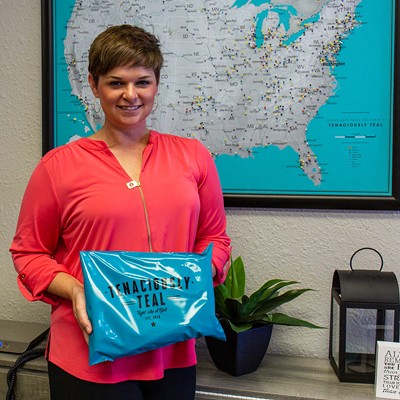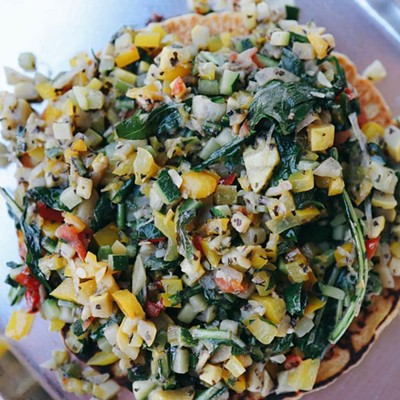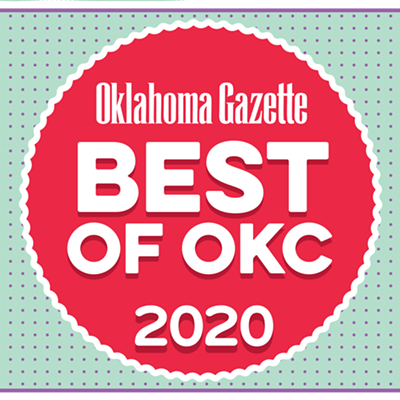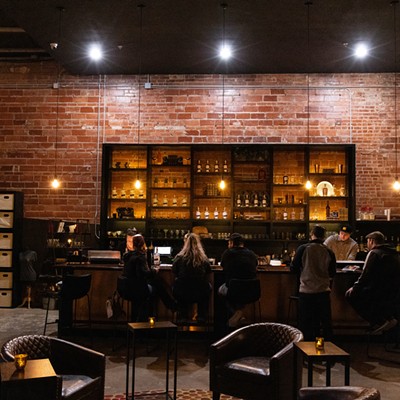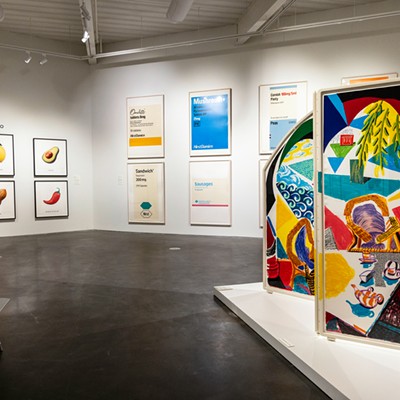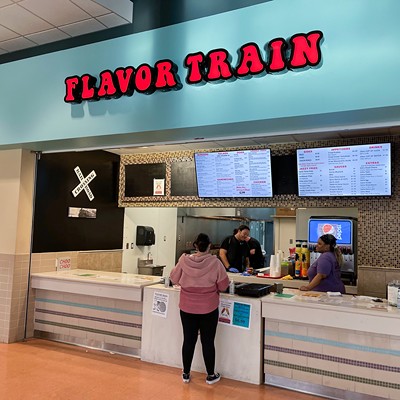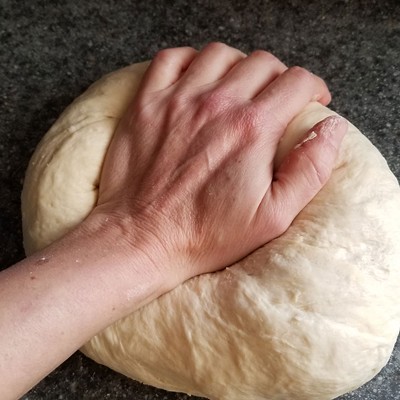“It’s a size and quality (difference),” Jennings (pictured) said about loose-leaf versus bag tea. “Loose-leaf is whole leaf … it means it’s the closest to the plant, as far as its size and the process to make that particular tea. In a tea bag — and we’re talking about the older, traditional tea bag — it’s just ground into almost oblivion.”
That doesn’t mean all bags are bad.
Some companies now put their tea in silk pyramids, which allows for the non-dust tea inside to expand. “Companies are smarter about realizing that the trend in tea is people are wanting to get back to something more original to its state and better quality.”
Urban Teahouse has been open for nearly two years and offers only loose-leaf tea. Guests can purchase teas to take home or drink it — hot or iced — in the pretty, minimalist cafe. It also sells infusers and timers, which are essential when preparing loose-leaf tea.
“Your temperature’s important, so like black teas are typically 212, which is a full boil,” Jennings said. “Really important is the quality of your water. Tea is 95 to 97 percent water, so if you’re using tap water that’s really yucky, that’s absolutely going to affect your tea.”
Also important is paying attention to steep time, which varies for each type of tea. “Removing your infuser when your time is up is also a little area that people tend to mess up and then over-steep,” she said.
It’s a bit more work, but Jennings said it’s easy once you get into the rhythm. And can people tell the difference between bag and leaf? Absolutely, she said.
“As soon as I turn someone on … to tea that (is loose-leaf instead of in a bag), they recognize the taste, but they are just, ‘Wow. That is so different, so much better.’” Tea is also about community.
Think teatime: The English tradition is about taking a break with friends or family. Metro tea fans can get into the custom at Inspirations Tea Room, 2118 W. Edmond Road in Edmond, which has been serving tea for seven years.
“It’s a true tea party,” owner Larry Rhoads said of their tea service (book at least 24 hours in advance). Individuals, couples or groups enjoy the full, traditional tea, including a three-tiered tray of savory and sweet treats like cucumber sandwiches, scones, lemon curd and chocolate-dipped strawberries.
“There’s no one else in the metro that does anything like it,” Rhoads said. “It’s the classic English tea experience with the scones and lemon curd. All of the traditional tea. It’s conversational, it’s interactive.”
Inspirations also does a special Princess Tea for little girls — “It’s a special treat for young ladies.”
Inspirations is also a lunch spot, although tea is never far away. The lunch features three types of iced tea and an extensive hot tea menu. All teas come from Teaoli, 1389 E. 15th in Edmond, a tea and olive oil shop Rhoads owns. A second Teaoli location in Norman is opening soon.
Teaoli features loose-leaf teas that range from traditional to herbal, with many custom blends, like the popular Blue Sapphire, a black tea with strawberry, kiwi and coconut. “We have some custom blends for us that are really special,” Rhoads said.
The teas can be bought to take home (samples are available at the shop) or you can buy an iced or hot tea to go.
Back at Urban Teahouse, Jennings stocks herbal, traditional and popular blended teas that can be prepared iced or hot.
“Being summer, people are really interested in fruity greens,” she said. Some favorites include orange-vanilla rooibos or Meyer lemon black tea, which Jennings said won the world tea championship for iced tea this year — “It’s phenomenal.”
The shop offers European-style baked goods from Prairie Thunder Baking Co. to complement the tea, and Jennings said she will soon add a few simple lunch items.
So, tea school grads, final question:
Have you ditched the papery bags yet?
FIT TO A TEA
All of the traditional teas are produced from the Camellia sinensis plant
— the variations come from where the plant is grown, when it is picked
and how it’s processed. Herbal teas are made from other plants.
—White tea: This is the least processed and also has the least caffeine. It is very light in both color and flavor.
—Green tea: Moving up the scale, green tea — the tea of Asia — has
moderate caffeine with a bit more color and flavor. It is often blended
with other flavors (like flowers or fruit).
—Oolong tea: Popular in China, oolong is full-flavored and semi
fermented, which ups the caffeine to about 15 percent in each cup.
—Black tea: The traditional tea most Westerners drink (think Earl Grey),
black tea is fully fermented and packs about 20 percent caffeine in
every cup.
—Rooibos tea: Rooibos, or red tea, is made from the South African red
bush. It doesn’t have any caffeine, but is naturally sweet and sometimes
nutty.
—Maté tea: This strong, coffeelike tea is made from the twigs and leaves
of the South American yerba maté plant. It has almost as much caffeine
as a cup of coffee.
—Jenny Coon Peterson
Photo by Mark Hancock


